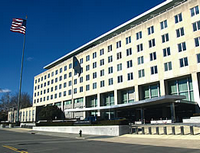It would be nice to think that, when President Barack Obama met with Israeli Prime Minister Benjamin Netanyahu last week, the U.S. leader had a long-term strategy for peacemaking: one that had emerged from months of careful analysis of the Israeli-Palestinian conflict by the government's best minds.
But though that thought would be nice, it would probably be wrong. There is, in fact, very little long-term strategic planning being performed at the highest levels of U.S. foreign policymaking. The office best known for strategic thinking -- the State Department's Policy Planning Staff -- has plummeted in influence and prestige since its heyday in the late 1940s. And since S/P, as it is called in Foggy Bottom, is unlikely to ever regain the stature it once had, U.S. foreign policy will probably remain free of long-term strategic planning for the foreseeable future.
S/P was once among the most influential offices in the U.S. government. It was created out of necessity at the outset of the Cold War, when Secretary of State George C. Marshall returned from a Council of Foreign Ministers meeting in Moscow in April 1947, shaken by the dire plight of Western Europe. Economic catastrophe on the old continent seemed imminent, leaving Europe vulnerable to Soviet Communism. "Europe was in a mess. Something would have to be done," the diplomat George F. Kennan wrote in his Memoirs. That something was S/P. The day after the Moscow meeting, Marshall instructed Kennan to immediately establish an office to develop long-term foreign policy ideas.

